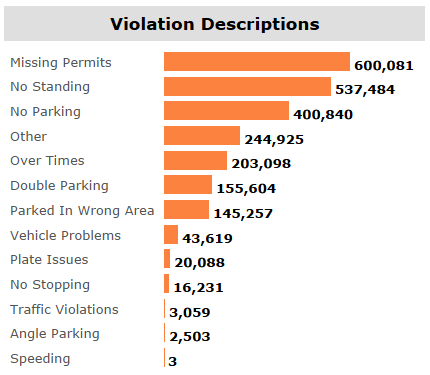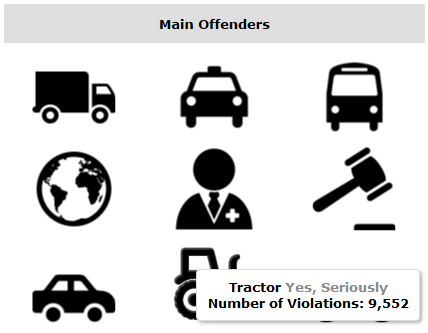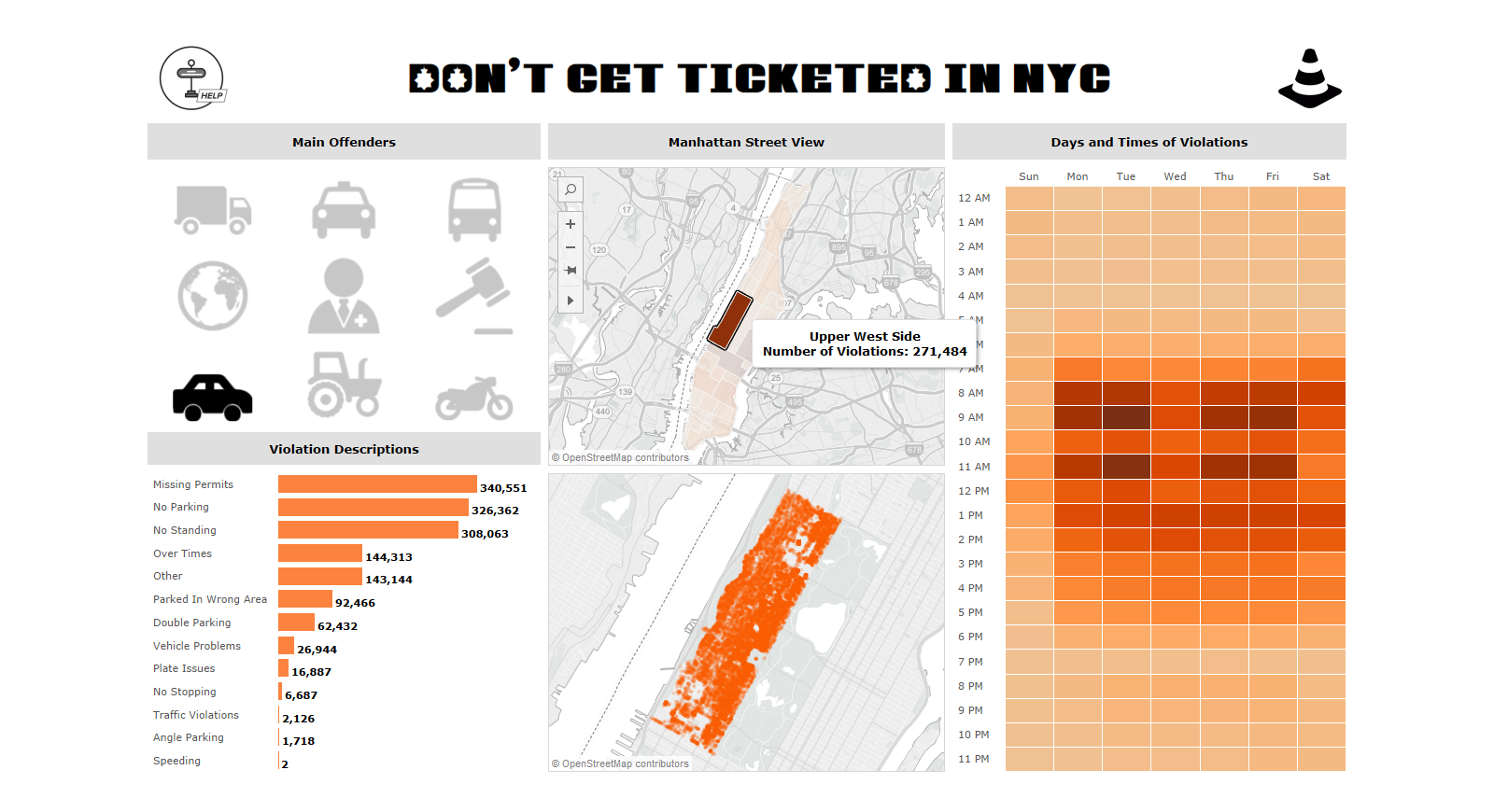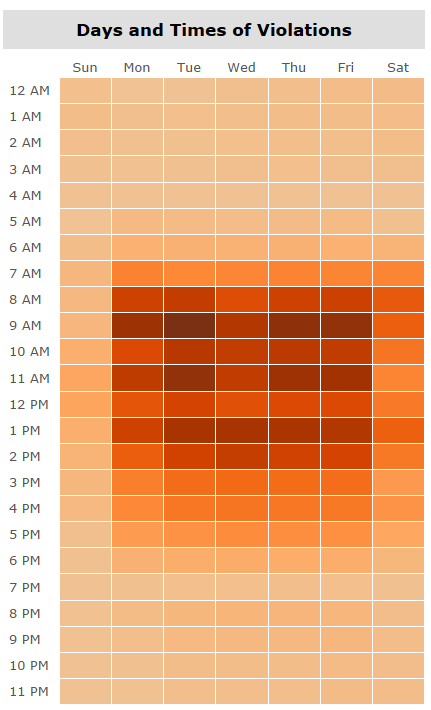According to ParkWhiz, the rates for hourly parking in New York City can range from $5 all the way up to $250. Adding to that the potential for getting ticketed while parked makes NYC one of the hardest places for drivers to find parking. To explore factors that may help prevent you from getting a ticket, Jimmy Steinmetz and I obtained data from NYC Open Data that was collected by the NYPD. The data set included information about the location, time, vehicle type, violation type, tag type and more. After a little prep, we visualized that data in the below Tableau viz:
Cleaning the Data with Alteryx
With over six million records in the data set we needed to clean up the data some before we could work with it in Tableau. We turned to Alteryx to help us out with this process. The following steps helped us produce a couple of Tableau Data Extracts that made the visualizations run quickly (Pro Tip: If you are writing TDEs directly from Alteryx, it’s best to write out another copy as a CSV or other file type that’s readable outside of Tableau, in case you need to work with it again later):
- Limited the number of columns to only the fields that will be used in our analysis
- Split the data set into two, with different levels of aggregation to slim down what we were using
- Combined Street Name and House Number columns to make one Address column, in order to geocode the locations of parking violations
Bringing the Data into Tableau
After cleaning our data and looking only at the first seven months of 2015, we were left with approximately 1.8 million records. Once we had the data in Tableau, we were able to start exploring violation types, plate types and the location of violations.
The violations were grouped in order to get an overall view of the types of parking tickets that were issued:

The most common type of violation in NYC is Missing Permits. Some of these violations sound very similar, such as No Standing, No Parking, and No Stopping. All three of those violations appear in the top 10. According to the New York Safety Council, No Standing refers “to unloading and loading people only, not merchandise.” No Parking allows drivers to drop off or pick up individuals as well as loading and unloading merchandise, but they must not leave the vehicle unattended and are expected to complete the task in a short amount of time. No Stopping does not allow the driver to stop for any reason, including passenger pick up or drop off. If we were to group those violations together into one, then they would result in the highest number of parking violations in the city.
Analyzing Plate Types
Along with the violations, we explored the various plate types that were listed in the data set. We chose to display the top nine plate types by violations to analyze the parking data using custom shapes:

The shapes represent the type of plate on the violation. Hovering over the shape will give you the plate type as well as the number of violations for said type. We grouped the plate types by searching for like terms and researching the codes and groupings NYC uses. By grouping the data in such a way, we were able to determine which plate type received the most violations and where those violations occurred. By interacting with the dashboard, we found that the passenger car plate type had the largest number of violations. There were approximately 1.5 million violations overall with almost 275,000 coming from the Upper West Side neighborhood.

Timing of Violations
We also looked at specific times of violations being issued. Overall, weekdays have spikes in the morning hours from 9 a.m. till 10 a.m., the lunch time hours from 11 a.m. till 12 p.m. and the afternoon hours from 1 p.m. till 2 p.m. Those spikes are denoted by increasingly darker shades of orange in the image below:

Most plate types follow this pattern. If they deviate, it is usually that they have less violations in the afternoon and more in the morning or on weekends. Give it a try: Click on Missing permits to see that it has the largest number of violations in the afternoon and on Saturday morning. No Standing and No Parking have spikes during the morning hours and afternoon hours, which can be expected as those are typically drop off and pick up times from work.
So, in efforts to save the drivers of NYC from getting more parking violations, we recommend driving your tractor from 3 p.m. till 10 p.m. on a Sunday anywhere you want. Realistically, if you keep your permits up to date and don’t leave your car unattended while dropping someone or something off, you will avoid the majority of parking violations in NYC.

